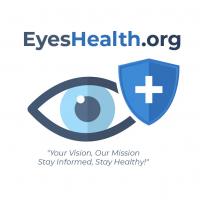Rameshwaram Netralaya - Dr Umesh Singh speaks about Dry - Causes, symptoms, Treatments
Keep Your Eyes Hydrated – Because Comfort Matters!
.jpg)
Dry eye syndrome occurs when your eyes do not produce enough tears or when the tears evaporate too quickly. Tears are essential for maintaining the health of the cornea and providing clear vision. When tear production is insufficient, it can lead to discomfort and vision disturbances.
Dry eyes have become a common problem in today’s digital age, affecting people of all ages. Dr. Umesh Singh, a renowned Eye Surgeon & Phaco Specialist at Rameshwaram Netralaya, Prayagraj, shares his expert insights on this prevalent eye condition and how to manage it effectively.
Understanding Dry Eyes
Dry eye syndrome occurs when your eyes do not produce enough tears or when the tears evaporate too quickly. Tears are essential for maintaining the health of the cornea and providing clear vision. When tear production is insufficient, it can lead to discomfort and vision disturbances.
Common Causes of Dry Eyes
According to Dr. Umesh Singh, several factors contribute to dry eyes:
-
Prolonged Screen Time – Excessive use of computers and mobile screens reduces blinking, leading to quicker tear evaporation.
-
Aging – As people age, tear production naturally decreases.
-
Environmental Factors – Wind, smoke, and air conditioning can accelerate tear evaporation.
-
Medical Conditions – Conditions like diabetes, arthritis, and thyroid disorders may increase the risk of dry eyes.
-
Contact Lens Use – Prolonged wearing of contact lenses can contribute to dryness.
-
Medications – Antihistamines, decongestants, and certain blood pressure medications may reduce tear production.
Symptoms of Dry Eyes
Patients experiencing dry eyes often report: ✔️ A burning or stinging sensation ✔️ Redness and irritation ✔️ Blurry vision ✔️ Sensitivity to light ✔️ A gritty or sandy feeling in the eyes ✔️ Watery eyes (a reflex action to dryness)
Effective Treatments for Dry Eyes
Dr. Umesh Singh emphasizes the importance of early diagnosis and treatment to prevent complications. Some effective ways to manage dry eyes include:
🔹 Use of Artificial Tears – Over-the-counter lubricating eye drops can provide immediate relief. 🔹 Blink More Often – While using screens, make a conscious effort to blink frequently. 🔹 Follow the 20-20-20 Rule – Every 20 minutes, look 20 feet away for 20 seconds to reduce eye strain. 🔹 Stay Hydrated – Drinking enough water helps maintain tear production. 🔹 Humidifiers – Using a humidifier at home or in the office can add moisture to the air. 🔹 Proper Nutrition – Omega-3 fatty acids found in fish, flaxseeds, and walnuts promote eye health. 🔹 Advanced Treatments – In severe cases, prescription eye drops, tear duct plugs, or light therapy may be recommended.
Final Advice from Dr. Umesh Singh
If you experience persistent dry eye symptoms, do not ignore them. Seeking timely consultation with an eye specialist can help prevent long-term complications. At Rameshwaram Netralaya, Prayagraj, Dr. Umesh Singh and his team provide advanced diagnosis and treatment for various eye conditions, ensuring optimal eye health for every patient.
About The Author

EyesHealth.org is founded by a team of experienced ophthalmologists, optometrists, and vision care specialists dedicated to spreading awareness about eye health. Led by passionate eye care expert with years of experience in ophthalmology, the platform aims to educate people about common eye diseases, prevention tips, and the importance of regular eye checkups. With a commitment to providing accurate, research-backed information, EyesHealth.org empowers individuals to take charge of their vision health. Through informative articles, expert insights, and awareness campaigns, we strive to ensure that everyone enjoys a lifetime of clear and healthy eyesight.










